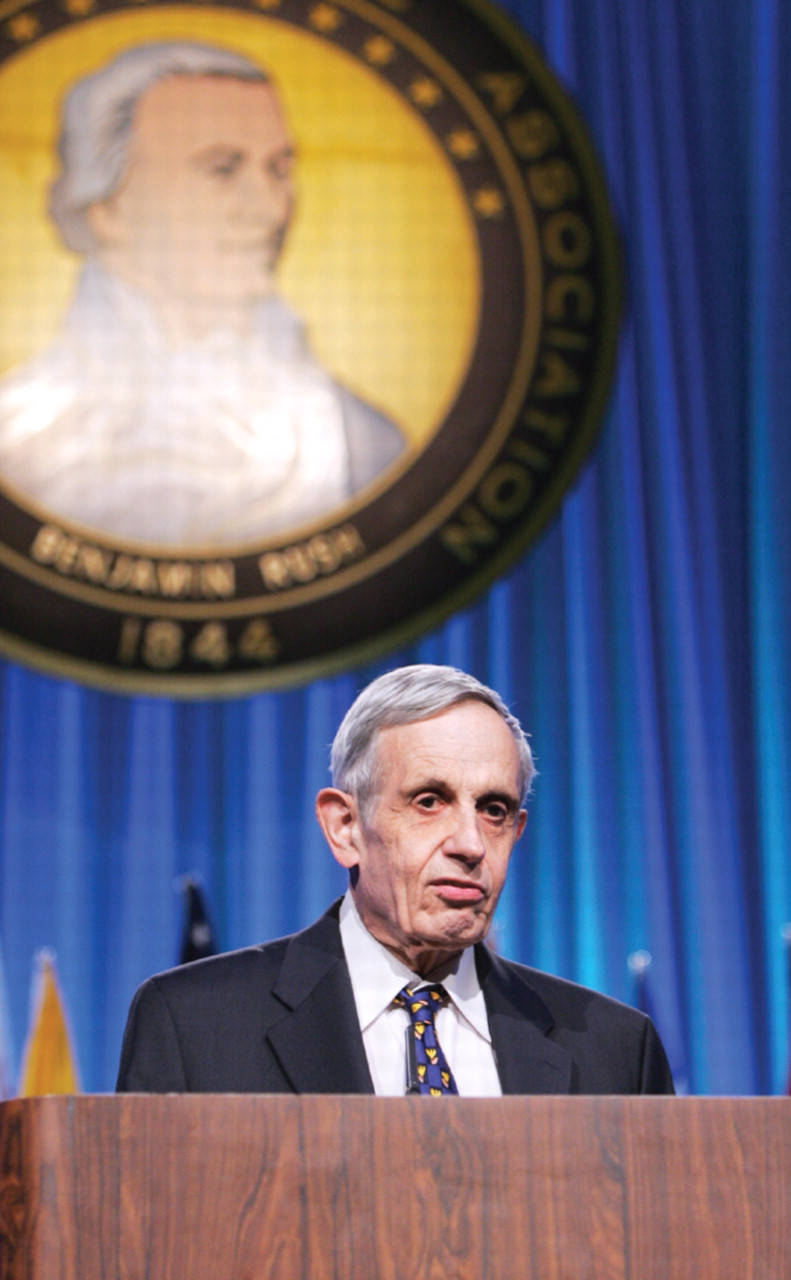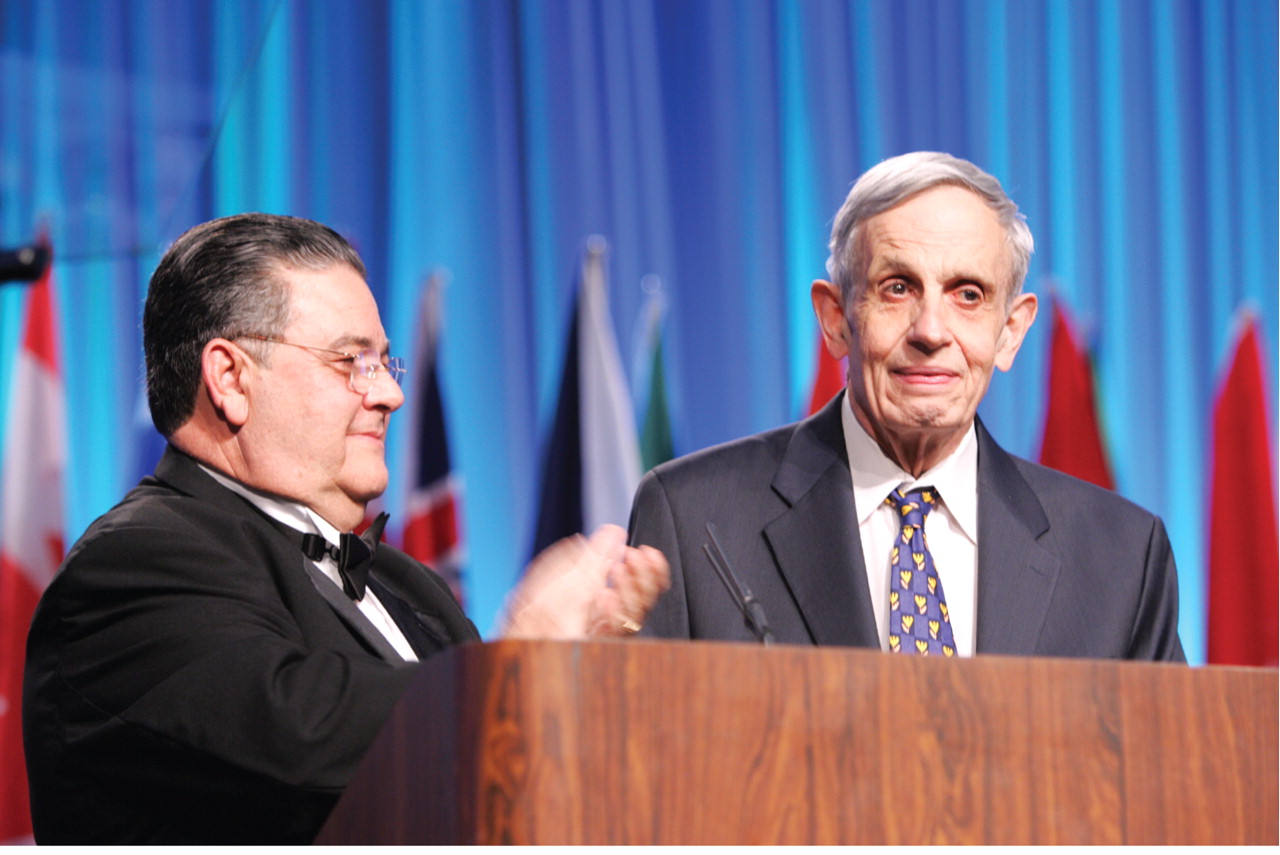Nash Suggests Schizophrenia May Serve Adaptive Function
The recovery movement, focusing on a patient's attributes and aptitudes rather than on pathology, has had no more potent a symbol than John Nash, Ph.D.

John Nash, Ph.D.: “A possible, but perhaps questionable, inference is that humans are notably subject to mental illness because there was a need for diversity in the patterns of human mental functions.”
Credit: David Hathcox
The world-renowned mathematician, whose long struggle with schizophrenia was the subject of the Oscar-winning film “A Beautiful Mind,” has offered vivid proof that while patients may not be “cured” of schizophrenia, they can live fruitful and productive lives.
And, as in the case of Nash, they may sometimes dazzle the world with their accomplishments.
At APA's 2007 annual meeting in San Diego in May, Nash spoke to a jammed-to-the-rafters crowd in an address that had to be delayed to clear the aisles of people who couldn't find seats.
Applying his specialized understanding of “game theory” to an analysis of mental illness and his own experience with psychosis, the 79-year-old Nobel Laureate suggested that severe mental illness exists in nature as a consequence of the diversification of species, and that it may serve the needs of adaptation by its not infrequent association with genius.
It is a line of thinking that has been followed by such renowned psychiatric researchers as Nancy Andreasen, M.D., and Kay Redfield Jamison, Ph.D.
Nash's remarks were made at the William C. Menninger Memorial Lecture following the convocation of APA's 2006 fellows and distinguished fellows.
“When there are large populations and behavior of a complex structure, it observably turns out that the individuals of a species can have quite varied forms of behavior and that they may serve the interests of a nest or family or tribe in quite varied fashions,” Nash told psychiatrists.“ In some varieties of ants there are specialized members of a nest that are 'warrior ants,' and these are quite specialized in their function. And with the bees, only the queen and the haploid drones function directly in the genetics of reproduction, and most of the hive are 'worker bees.'
“It is conceivable that the susceptibility of humans to depression or to bipolar disorder may correlate positively specifically with the composition of poetry,” Nash said. He noted that the American poet Robert Lowell was hospitalized at McLean Hospital near Boston at the same time that Nash was admitted for schizophrenia.
“One thing about diversity in natural species that is well understood by evolutionary biologists is that the natural phenomenon of mutations serves to prepare a species for adaptation to changing conditions or for improved adaptation to an existing level of environmental circumstances,” Nash said. “This is a topic that has been studied in game theory.... If species are considered as players in a game that continually repeats, and if the species are provided with the possibility of change through mutation of their playing behavior,... then the effect is that the players or species can be shown to naturally evolve so as to get better payoffs from the game.

APA President Pedro Ruiz, M.D., applauds John Nash, Ph.D., at the conclusion of his lecture at the Convocation of Distinguished Fellows at APA's 2007 annual meeting. Ruiz, who invited Nash to speak at the meeting, praised the Nobel Prize–winning mathematician as a “role model and symbol” that people with mental illness can function successfully in society and have much to contribute.
Credit: David Hathcox
“So a possible, but perhaps questionable, inference is that humans are notably subject to mental illness because there was a need for diversity in the patterns of human mental functions,” Nash said.
Nash earned a Ph.D. in mathematics from Princeton University, and from 1951 until 1959 was a faculty member at the Massachusetts Institute of Technology. He was hospitalized in 1959 after exhibiting signs of paranoid schizophrenia.
A year later he returned to Princeton and spent the next decade in and out of psychiatric hospitals; he also became something of a legendary figure on the Princeton campus, scrawling arcane equations on blackboards in the middle of the night. Despite having stopped taking medication, by the 1990s friends and acquaintances began to observe that he appeared to be recuperating.
In 1991 he remarried the woman he had first met and married at MIT, but whom he had divorced when she had him forcibly hospitalized. In 1994 Nash received the Nobel Prize in recognition of his early work on game theory.
Outgoing APA President Pedro Ruiz, M.D., was responsible for bringing Nash to the meeting.
“This is a man who has had a very serious psychiatric illness yet who has made outstanding contributions to humanity and the world at large,” Ruiz said. “With the emphasis on recovery and full functionality on the part of the mentally ill, Nash is an ideal role model and symbol. He demonstrates to the public at large that there is great potential for the mentally ill to function and contribute.” ▪



